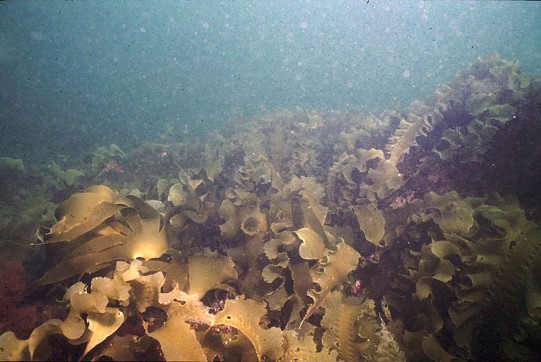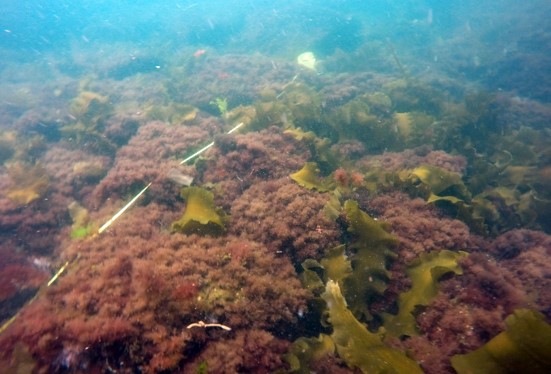

From UNH News Service: The effects of climate change are becoming more apparent, from the rapidly warming Gulf of Maine, to more frequent and severe storms and the increase of invasive turf seaweed. Researchers at the University of New Hampshire have found that these environmental developments are contributing to the transformation of the seafloor to a lower, more patchy seascape dominated by shrub-like seaweed which could impact species habitats and the structure of the food web.
“These shifts in nature have created a perfect breeding ground for much bushier, or turf, seaweed to take root,” says Jennifer Dijkstra, research assistant professor in UNH’s Center for Coastal and Ocean Mapping. “Our earlier research showed a clear increase in invasive seaweed in areas once dominated by tall blades of kelp, that are important in the protection of sea life, but this new research showed us just how widespread this shift is and the effects the turf seaweed could potentially have on the ecosystem.”
In their research, recently published in the Journal Ecosphere, the researchers used high-resolution underwater video of the seafloor taken by moving back and forth in a “lawnmower” pattern. The footage of various seafloor habitats, collected from over 100 square miles, was transformed into photomosaics to generate a spatial seascape map. In the imaging they identified over 23 different types of seaweed, breaking it down to areas dominated by turf, kelp or mixed seaweed. Overall, the lower-lying turf seaweed made up a significantly larger amount of the seascape.
“We also looked at temperature increase by decades and saw that the warmer water temperatures central to climate change are likely shortening the growing season of kelp, which prefers colder conditions, but the more dominant forms of turf seaweed can thrive in these temperatures,” said Dijkstra. “So, turf that is already more easily dislodged by storms can become loose, reproduce and travel to take advantage of open space year-round in the Gulf of Maine.”
The researchers also examined the relationship between seascape patterns and patchiness and its relation to the abundance of fish in each habitat. Results showed that patch size had a direct correlation to the abundance of fish in habitat types and that more turf seaweed areas may lead to fewer observed fish in these habitats, specifically the mid-trophic level species like cunner. A habitat dominated by lower, bushier turf could lead to fewer areas for fish to hide and increase the time and energy that species like cunner spend seeking and defending their shelter, or may even cause them to occupy less sheltered areas in which the risk of predation is greater.
Researchers say the trend for increasing temperatures combined with more frequent and intense storms and fluctuations of available resources could create better conditions for the turf seaweed to prosper and grow and therefore increase the overall seascape patchiness. Their research indicates that these changes could propagate up the food web, specifically affecting those species that are residential and seek refuge and food within these habitats.
Co-authors on this study, all from UNH, are Yuri Rzhanov, research professor of ocean engineering; Brandon S. O’Brien, Ph.D. student; Kristen Mello ‘14, project research specialist; and Amber Litterer ‘16, Center for Coastal and Ocean Mapping.

 Return to the Concord Monitor
Return to the Concord Monitor